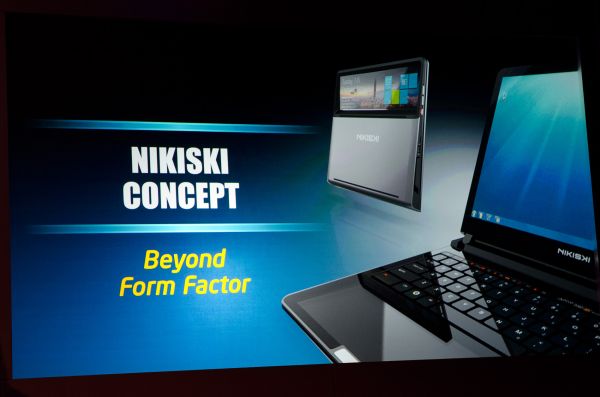Computex 2011: Intel Mentions Haswell Will Support "Multiple OSes", But Why?
by Anand Lal Shimpi on May 31, 2011 4:49 AM EST- Posted in
- Trade Shows
- CPUs
- Intel
- Haswell
- Computex 2011
I hate that I didn't pull my camera out quickly enough to catch this slide, but Intel's Mooly Eden just mentioned an interesting feature of Haswell. He stated that Haswell will support "multiple OSes". Clearly Sandy Bridge, Ivy Bridge and older Intel architectures have supported multiple OSes, but that was never listed as a feature until Haswell. I suppose this means more than it'll run both Windows and OS X, but what do you guys think Intel meant by it?
I already asked Intel and of course I didn't get an answer, I was just told that it was an astute observation and something we'll have to talk about at a later point in time. I suspect this is a statement about the future of the OS space in mobile computing but I'm not entirely sure what Intel views will be different come 2013. Microsoft will obviously support ARM in Windows 8, but what will Intel support with Haswell that it didn't before? What do you all think?
Mooly also showed off a concept Haswell PC called Nikiski. It's a notebook with a transparent touchpad area that lets you view part of your screen while the clamshell is closed. Check out pics of the concept in the gallery below.


















31 Comments
View All Comments
Comdrpopnfresh - Wednesday, June 8, 2011 - link
UEFI adopted as the microarchitectural platform's firmware standard and externally accessible QPI interconnects (or other ptp ext communication link).With windows 8 running on soc and arm in addition to x86 in 2013 it would make sense to provide a flexible platform to capitalize on EFI's cpu independence so soc and x86 hardware can be used within the same device, instead of choosing low power or competent performance in the split device market we have today.
Thin/light or tablet form factor systems will execute/run a single, shared win8 environment in either soc or x86 hardware processing modes, with the QPI capabilities preserving software portability between modes and also allowing system resources to be used by both sets of hardware. The support of both, or either features in Haswell will make for an explosion of diverse device configurations and leaps in functionality.
I imagine a laptop that instead of going to sleep enters a lower powered always-on available win8 mode running on the soc components and provisioning hardware components to allow sideshow functionality and live/cloud connectivity at any time along with windows environment, and full-on traditional notebook performance from the same device.